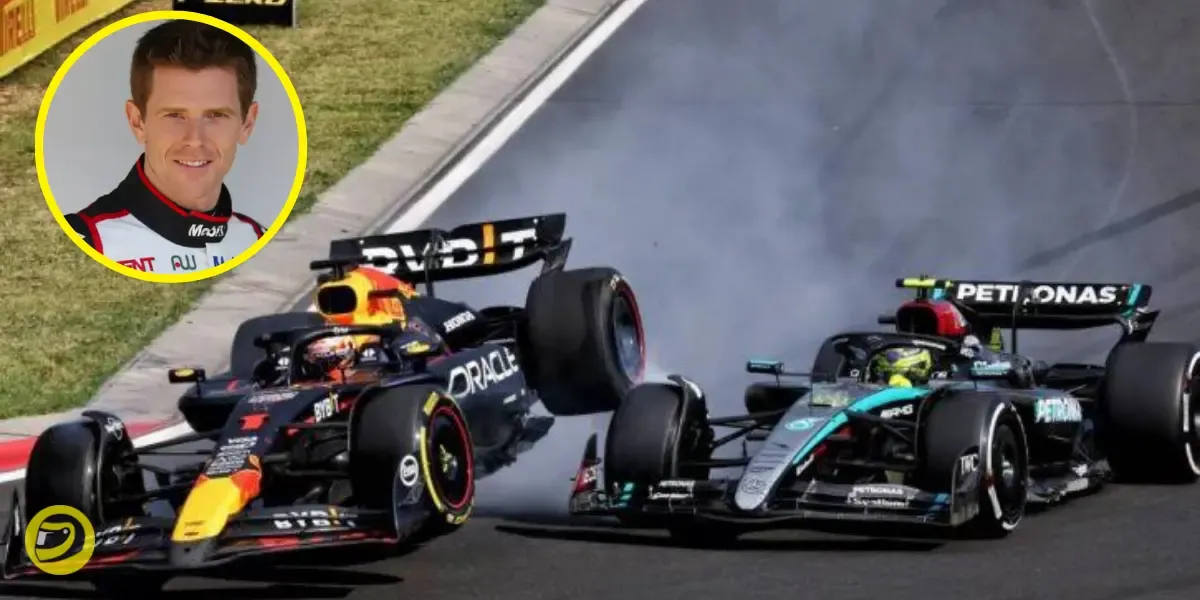Hamilton and Verstappen Hungary incident sparks debate
Lewis Hamilton's defensive driving at the Hungarian GP sparks debate after his collision with Max Verstappen. Sky F1 analyst Anthony Davidson suggests Hamilton exploited a "grey area" in Turn 1, reigniting discussions about tactics in F1.

Lewis Hamilton's subtle approach to Turn 1 at the Hungarian Grand Prix has reignited discussions about defensive driving tactics in Formula 1, following his collision with Max Verstappen.
Sky F1 analyst Anthony Davidson suggests Hamilton may have exploited a "grey area" similar to Verstappen's controversial move in Austria.
The incident, which saw Verstappen attempt an overtake on Hamilton for third place, resulted in contact between the two rivals.

While Verstappen briefly went airborne and finished fifth, Hamilton secured the final podium position.
Post-race, stewards deemed it a racing incident, requiring no further action.
Davidson's analysis: A nuanced perspective
Anthony Davidson, breaking down the collision, highlighted the complexity of the situation.
"We've got to look at why the lock-up happened and who was at fault for the collision,"
he explained. Davidson noted Hamilton's "slightly shallow approach to the corner" and "slightly early turn-in," which he believes caught Verstappen off guard.

"That's this grey area that all these drivers play around with,"
Davidson elaborated.
"Max was doing it in Austria. Lewis is doing it here. You're making it uncomfortable for the driver trying to overtake you."
The mechanics of the collision
Davidson's analysis revealed the technical aspects that led to the contact. As Verstappen attempted to capitalize on a perceived gap, he found himself on the marbles, making it challenging to slow down effectively.

The resulting double front wheel lock-up left Verstappen with no steering control, causing his car to continue straight into Hamilton's path.
"When it locks up for Max, it's almost as if the car goes left. It doesn't. It's an optical illusion,"
Davidson clarified.
"When you get a double front lock-up, you have no steering, lo and behold, so therefore, that's what ultimately caught Lewis out."
Verstappen's perspective and championship implications
Verstappen, who had faced criticism for his Austria collision with Lando Norris, pointed the finger at Hamilton for the Hungary incident.

The Dutch driver's fifth-place finish allowed Norris to trim his championship lead to 76 points heading into the Belgian Grand Prix, the final race before the summer break.
The fine line of defensive driving
The incident has sparked debate about the limits of defensive driving in Formula Davidson acknowledged the nuanced nature of such tactics, stating,
"It's that grey area, like I say, whether it's a jink to your opponent when they move out to overtake you, they move out and then you counteract. "
"That's quite different to a subtle turn in. But it is in the braking zone."

As the championship battle intensifies, the scrutiny on driving tactics is likely to increase.
The fine line between aggressive defense and causing a collision remains a point of contention among drivers, teams, and officials alike.
With the Belgian Grand Prix on the horizon, all eyes will be on how Hamilton and Verstappen navigate their on-track battles, especially in light of this latest controversy.
The incident serves as a reminder of the razor-thin margins in Formula 1, where split-second decisions can have significant championship implications.





Comments ()